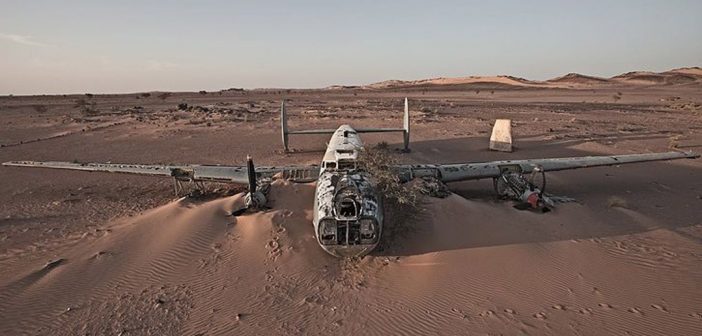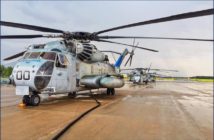The Grampaw Pettibone Squadron was once again honored to have G. Pat Macha share his knowledge and research of local area historic aircraft wrecks and the causes leading up to the crashes. The presentation focused on aircraft sites located in San Diego County. It was especially delightful to have him introduced by our OPS Cynthia Macha, Pat’s sister.
For those unfamiliar with Pat, he became involved with aircraft crash site investigation beginning in 1963, while working as a hike master in a youth camp in the San Bernardino Mountains. While leading an overnight hike, his group came upon an accident crash site containing what Pat recognized as a C-47 (DC3). Pat’s love of everything airplane comes from his father, and with his curiosity aroused and interest in solving the question ‘what happened?’, Pat began his quest to investigate and find the answer. This quest continues to this day.
Pat’s presentation focused on the ninth largest county in California, San Diego County. Pat presented a list of noted accidents, pictures and support explanation detailing each of the described events. One early military aircraft accident occurred when a US Army Air Service DeHavilland DH-4B with an Army pilot and Army officer passenger disappeared on a flight from Rockwell Field, later renamed North Island, to Fort Yuma, Arizona on December 7, 1922. The passenger was on his way to conduct an inspection of an ROTC unit near his destination.
The plane was eventually located by a rancher out for a horseback ride on May 12, 1923 and the remains were recovered by May 13. The pilot and passenger remains and personnel effects were recovered; however, the aircraft parts it was determined had no useable material that could be salvaged. As a result, the aircraft, engine and wreckage were left at the site.
A group of officers and civilian workers from Rockwell Field constructed a memorial honoring the service and sacrifice of the 2 men on the crash site. The remains of the Liberty engine from the DH-4B is the center piece of the site. This site is the Japacha Ridge Memorial located in Cuyamaca State Park.
Pat related a search request from an area resident interested in an aircraft wreck near his home. The aircraft was a McDonnell Douglas F3H-2N, Demon that crashed on October 3, 1956.
Pat’s research took some time; however, he was successful in identifying the pilot and events leading up to the aircraft crash and confirming the pilot’s successful ejection. Subsequent contact with the pilot led to a visit to view the crash site in 2008. The pilot shared his story with Pat indicating that the weather conditions at the time of the crash were 0 / 0 aggravated by turbulence and faulty instruments. The pilot bailed out landing on hard ground in the dark. Choosing to remain where he was, he heard a search helicopter and waited for morning light. Once light conditions were sufficient he discovered he was a few feet from a cliff overlooking a 500 foot drop.
On April 21, 1929 a Ford Tri-Motor operated by Maddux Airlines departed San Diego Airport with a crew of two and three passengers en route to Phoenix. After departure the plane was joined in the air by an Army aircraft . The pilot of the Army aircraft began flying around the commercial flight putting on a demonstration until it collided with the flight. The subsequent collision resulted in both planes crashing with the loss of life of all onboard
As Pat spoke he displayed pictures of the aircraft and events he was describing. One photo displayed was that of a Navy fighter, the Boeing F4B lost on a flight in 1937. Another photo of a Grumman F-3F biplane flown by a Marine pilot was practicing various maneuvers when witnesses saw the plane suddenly pull up, stall and enter a spin. The plane failed to recover in time and the subsequent crash killed the pilot. Many crash site photes followed.
On April 1, 1977 a Navy North American T-39D Sabreliner with five onboard for training crashed with all onboard. Evidence at the site suggested the plane may have experienced a stall spin event; however, this has not been confirmed.
The son of the pilot contacted Pat in August 2015 in order to visit the crash site.
Pat continued to share information on known and previously unknown aircraft accident sites. He also shared information on a well-known air disaster in the San Diego area. The worst air disaster in the San Diego area occurred on September 25, 1978 when a PSA 727 collided with a Cessna 172. Both the PSA flight crew which was preparing for landing and the 172 crew were notified by ATC of each other’s presence. This failed to prevent the midair resulting in the loss of life for 144 persons from both aircraft as well as residents living where the crash occurred.
As Pat noted, while new regulations were developed and new collision avoidance radar made mandatory for commercial and corporate aircraft were designed and installed, the critical exercise of awareness by all aircraft crews is critical.
Pat concluded his presentation by reminding the audience of the organization Project Remberance Team, that assists next of kin in visiting crash sites and erecting memorials where allowed.
The members and guests of the GPS/ANA Squadron wish to thank Pat Macha for his knowledge, effort and contribution in sharing this information. This article has been condensed by the editor.




